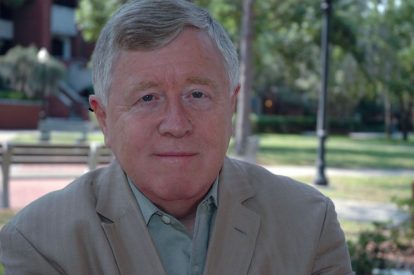
Contact Information
Overview
Shortly after finishing my Ph.D. in England I became a Research Associate (1977-99) and then a Senior Research Associate (1979-89) at Cornell University, before joining the faculty of the University of Florida (1989 to present). From 1997- 2000 I held a University of Florida Research Foundation Professorship, and for 16 years (1993-2009), I was chair of the Astronomy Department. Asteroid 3647 is named in my honor.
Under my chairmanship at the University of Florida, the Department of Astronomy has became a partner, with Spain and institutes in Mexico, in the 10.4 meter diameter Gran Telescopio Canarias, which is now the world’s largest telescope in its class. At the same time, the department built up a strong astronomical instrumentation group, specializing in near- and far-infrared instrumentation and innovative instruments for exoplanet searches. These instruments support the research interests of the department in the origin and evolution of planets, stars and galaxies.
Educational Background
- Ph.D. Astronomy, University of London, 1975
- D.Sc., Astronomy, University of London, 2002
Research
My research interests are centered on solar system dynamics and I am the coauthor of a graduate textbook on that subject published by Cambridge University Press in 1999. My contributions to planetary science, published with my students and other colleagues, include a broad range of theoretical papers interpreting recent observations of the solar system, particularly those returned by spacecraft. Our work on the chaotic dynamics of the Uranian satellites in 1984 predicted that Voyager observations of Miranda may show surface melting. Our analysis of the observed shape of Mimas showed that the icy satellite is centrally condensed. We predicted that some narrow rings may contain embedded small satellites. We developed an asteroidal origin of the zodiacal dust bands and we used IRAS observations to show that Earth is embedded in a resonant ring of dust and has a cloud of dust permanently in its wake. This was the first paper to demonstrate that the detection of structure in circumstellar disks may indicate the presence of planets.
Areas of Expertise
- Solar system dynamics and the structure of the zodiacal cloud and other debris disks